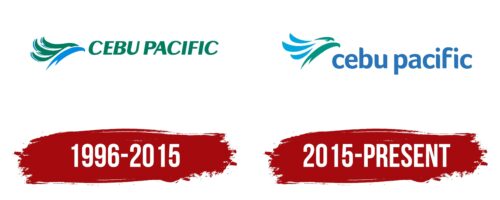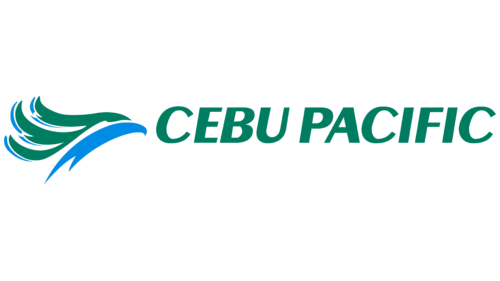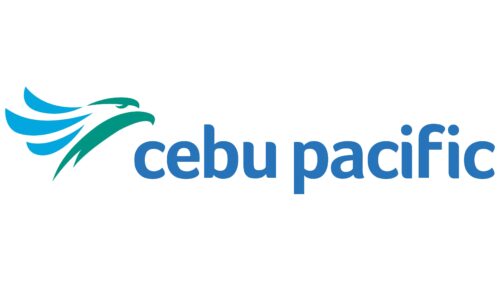The Cebu Pacific logo captures the Filipino spirit’s vibrant, fun, and welcoming essence. It features elements that symbolize affordability and a friendly approach to air travel. This approachability is reflected in the logo’s bright and lively design, which resonates with the country’s natural beauty and colorful culture.
Cebu Pacific: Brand overview
Cebu Pacific is a well-known low-cost carrier founded in the Philippines in 1988. It was started by John Gokongwei Jr., a businessman from the Philippines and a member of the well-known Gokongwei family, which owns the large conglomerate JG Summit Holdings.
The airline was first founded as a charter services-focused subsidiary of Cebu Air. In 1996, however, John Gokongwei Jr. turned the company into a low-cost carrier to provide reasonably priced travel for the expanding middle class in the Philippines.
On March 8, 1996, the airline launched its first commercial flight, a DC-9, from Manila to Cebu. This route connecting the two biggest cities in the Philippines paved the way for future route network expansion.
During its initial years, the airline focused on growing its market share within the Philippines. With affordable tickets and alluring promos, the airline started running frequent flights between major archipelago cities, including Manila, Cebu, Davao, Zamboanga, and Puerto Princesa.
The company began its foreign expansion plan in the early 2000s. The airline started developing its route network in the Asia-Pacific area in 2001 when it began operating its first international flights to Seoul and Hong Kong.
The company was the first Philippine airline to list its shares on the Philippine Stock Exchange in 2005. Through its first public offering, the business was able to draw large capital to support its ongoing development and fleet expansion.
The airline continued its rapid expansion in the 2000s, adding dozens of new domestic and international routes. It started offering flights to popular tourist locations, including Bali, Phuket, and Siem Reap, as well as significant Southeast Asian cities like Bangkok, Singapore, Kuala Lumpur, and Jakarta.
The company became the first Philippine airline to operate these cutting-edge, fuel-efficient Airbus A320s when it placed a sizable order for 15 aircraft in 2008. The new aircraft helped the airline lower fuel expenses, improve operational effectiveness, and provide passengers with more comfortable travel arrangements.
In 2010, the airline carried its 50 millionth passenger, a significant milestone reaffirming its position as a major participant in Southeast Asia’s and the Philippines’ quickly expanding aviation markets.
The second-largest order for Airbus aircraft ever placed by a Philippine airline was made in 2011. The airline agreed to buy 37 new aircraft, comprising seven wide-body A330-300s and thirty narrow-body A321neos. This order was part of an aggressive plan to fortify its position on home routes and increase its market share abroad.
After launching its first long-haul trip from Manila to Dubai in 2013, the company entered a new chapter in its history. As the first low-cost route connecting the Philippines and the Middle East, it created new options for tourists and labor migrants.
In the ensuing years, the company resumed its long-haul network expansion, adding flights to Sydney, Kuwait, Riyadh, and other key destinations in Asia, Australia, and the Middle East. Additionally, the airline updated its fleet with the addition of new Airbus A321neo and A330-900neo planes, which provide better customer comfort and fuel economy.
The airline celebrated its 20th anniversary in 2019, solidifying its position as one of Asia’s most prosperous and quickly expanding airlines. The airline’s fleet included over 70 contemporary aircraft, and its route network reached over 60 destinations across 17 countries.
The airline experienced a significant drop in air travel demand in 2020 due to numerous nations’ travel bans and quarantine regulations. The company responded to these obstacles by streamlining its operations and cutting expenses in various ways.
The airline drastically decreased the number of local flights and briefly halted foreign operations. Employees were placed on unpaid leave, and a portion of the fleet was grounded. These actions helped reduce losses and preserve financial health throughout the crisis.
Beginning in 2021, the airline resumed flights on stopped routes and increased flight frequency as the air travel industry progressively recovered. The airline unveiled several brand-new Airbus A321neo planes that were delivered by earlier orders.
The company is still expanding its flight schedule and repairing its route network in 2022. As travel restrictions are removed and demand increases, the airline is progressively starting to operate foreign flights again. Since the Philippines’ local market is recovering more quickly than its foreign counterpart, it is receiving special attention.
Meaning and History
What is Cebu Pacific?
It is a major low-cost airline in the Philippines, headquartered in Pasay City, Manila. It operates an extensive network of domestic and international flights, serving destinations in Asia, the Middle East, Australia, and the United States. She is known for its budget fares. The airline utilizes a modern fleet of Airbus and ATR aircraft, offering passengers a range of services such as in-flight meals and the option to purchase extra baggage.
1996 – 2015
From 1996 until 2015, Cebu Pacific used elements in its logo that symbolize the winds and ocean waves. These elements are depicted as whirls and blue waves swiftly approaching the horizon. Combining these motifs creates the impressive image of a mighty eagle, which watches over the world’s expanses from a majestic height. This eagle can be associated with the national pride of the Philippines—the Philippine Eagle (Pithecophaga jefferyi), one of the most powerful and majestic birds on the planet. This symbol was chosen deliberately: it reflects the airline’s power and aspiration for heights, which are key characteristics of the company.
The brand name’s green color emphasizes themes of growth and development, which are vital for a company looking to expand its market presence. “Cebu Pacific” carries a deep meaning: “Cebu” refers to the airline’s main city location. At the same time, “Pacific” highlights the connection to international flights over the ocean, accentuating the company’s global ambitions.
2015 – today
In 2015, symbolizing a new stage in its development, Cebu Pacific refreshed its logo, making it more elegant and evocative of the skies. In this new design, shades of blue dominate both the eagle feather imagery and the color of the brand inscription. These changes enhanced the associations with air and space and added visual lightness, reflecting the company’s aspiration to reach new heights in customer service.
The eagle, a symbol of power and freedom, is now positioned above the company name, emblematically emphasizing Cebu Pacific’s ambitions for growth and continual improvement of its services. This design element reflects a significant achievement for the company—crossing the threshold of one hundred million passengers. Such success marks a milestone, highlighting the trust and loyalty of its customers.
Using lowercase letters in the brand name expresses respect and gratitude towards passengers who choose Cebu Pacific as their reliable travel partner. This style of writing adds a touch of intimacy and accessibility to the company’s visual identity, focusing on the brand’s closeness to its users.






